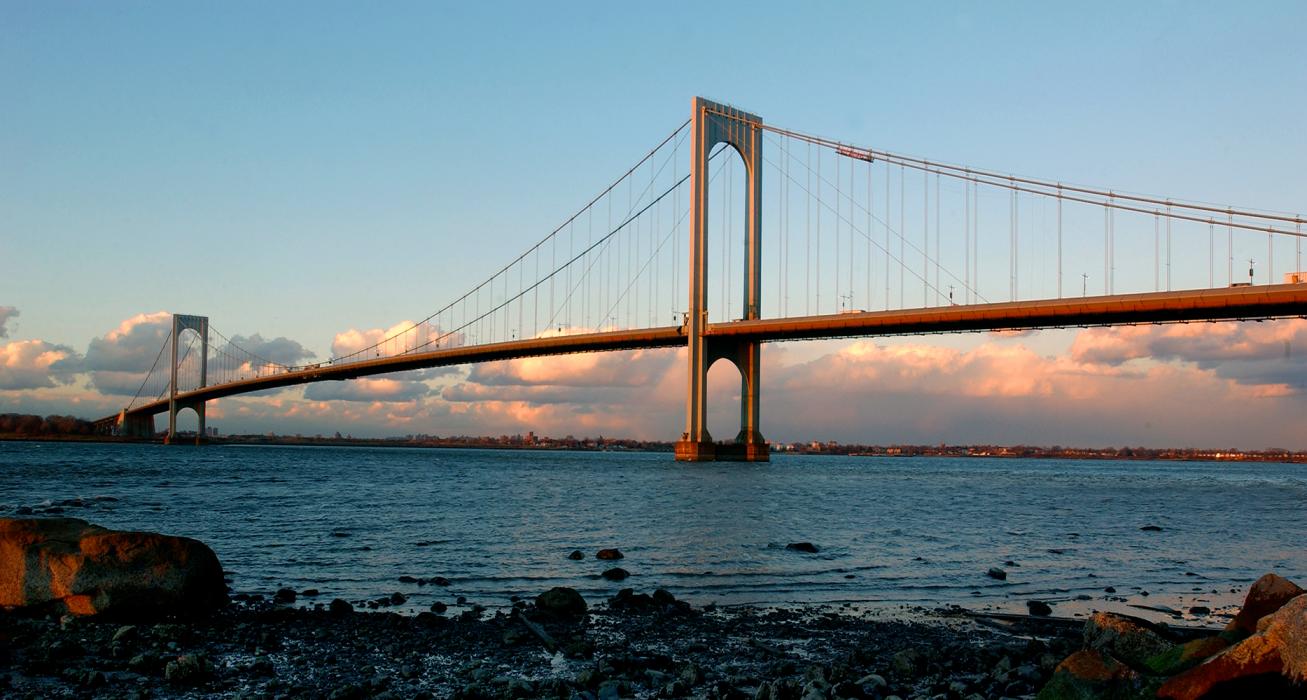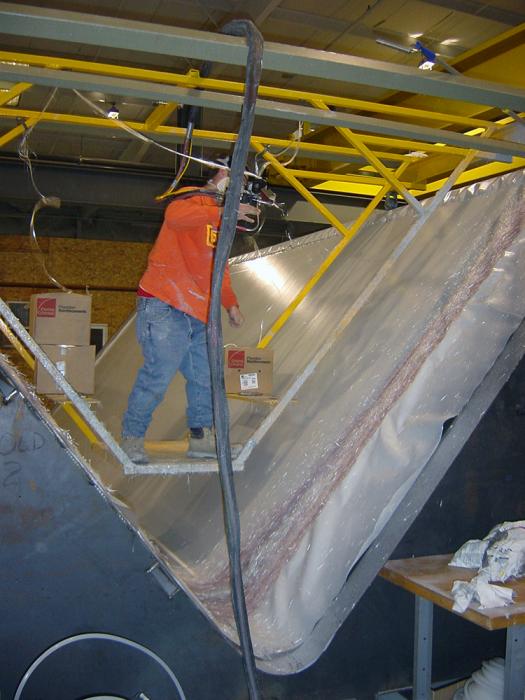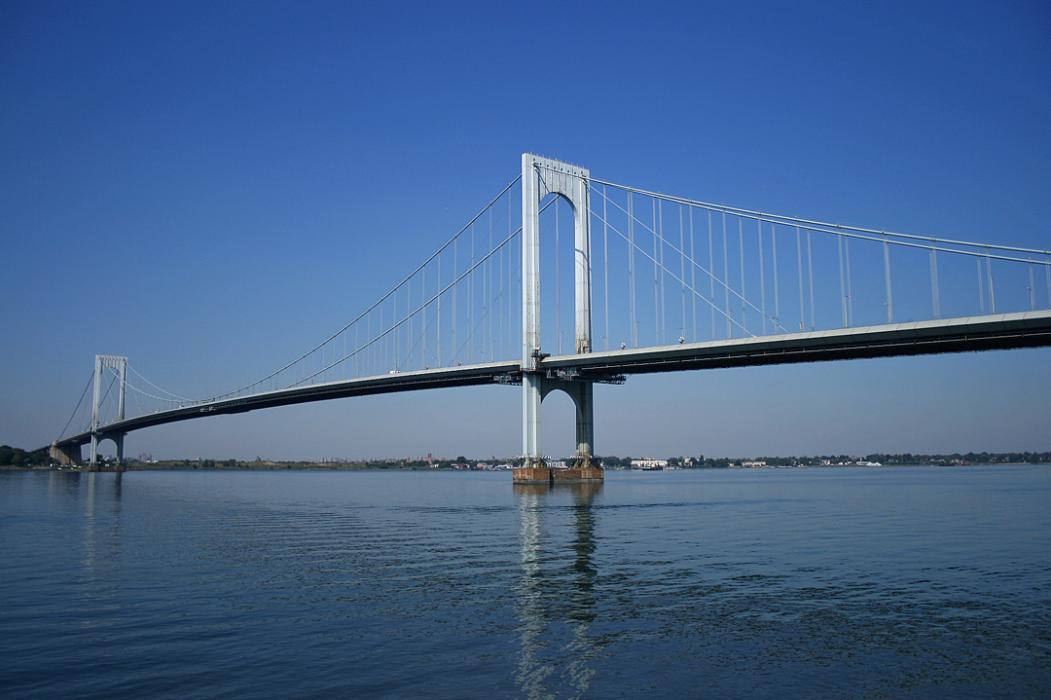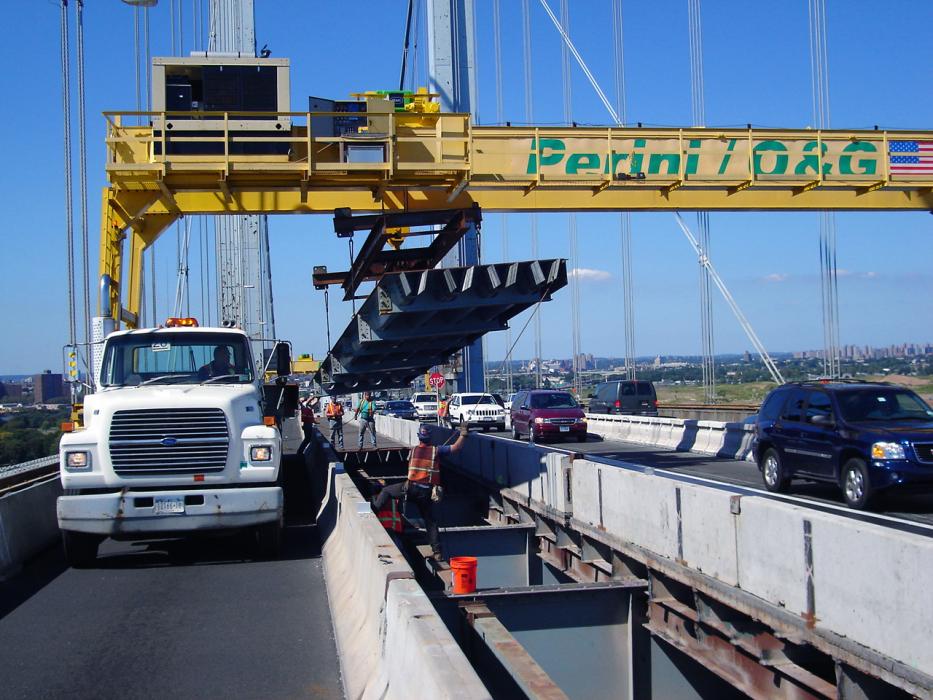Bronx-Whitestone Bridge Rehabilitation
We provided bridge design, analysis and inspection services for the rehabilitation of the Bronx-Whitestone Bridge for a series of interrelated reconstruction programs over several years.
Overview
The original idea for building a crossing connecting the Bronx and Queens was proposed in 1905, but it wasn’t until 1939 when the bridge was opened in time for the 1939 World’s Fair. Mayor Fiorello H. La Guardia, who laid the cornerstone for the bridge’s Bronx anchorage in 1937, lead the opening ceremony for the Bronx–Whitestone Bridge which, at the time, was the fourth longest bridge in the world. As of 2016, an estimated 124,337 vehicles use the bridge daily.
We provided bridge cable design, analysis and inspection services to MTA Bridges & Tunnel/TBTA for a series of interrelated reconstruction programs over the course of several years. We also serve as the prime consultant responsible for the bridge's biennial inspection of its main spans and approach spans.
Now in the 2020s, we're also helping improve the resilience of the bridge. Our work includes flood and storm-surge protection, replacement of emergency generators, upgrading and relocating electrical and mechanical equipment, and improving redundancy in the electrical systems.
Highlights
- In 1988, after extensive aerodynamic evaluation, we designed and provided construction support services for a tuned mass damper system to stabilize the bridge against possible damaging wind vibration.
- The damping system operates by means of its own inertia, elasticity, and friction, with no need for manual intervention, and uses 240-foot-long torsional springs on mass blocks weighing 25 tons each, and multiple caliper disc brakes to dissipate more than 200 horsepower.
- In 1995, we performed an in-depth inspection of the entire bridge, and established the vertical clearances of the bridge’s navigation channel under varying conditions of traffic, live load, temperature, and tide. During the inspection, we noted corrosion and other defects in the wires of the main cable; as a result the cable was unwrapped, wedged, oiled, coated with red lead paste, and rewrapped, with our team on hand to inspect the internal condition of the entire length of both main cables.
- In 2002, due to our previous extensive aerodynamic studies, we designed a deck replacement for the entire suspended span in order to increase the load-carrying capability of the main cables. The project involved the replacement of the original concrete-filled steel grid with an orthotropic deck, removal of the stiffening trusses, new lateral system, and new lighting to the bridge.
- We re-evaluated its stability under the revised configuration and designed wedge-shaped Fiber Reinforced Polymer (FRP) fairings on the bridge, which stabilize it in winds up to 120 mph. We also conducted a seismic performance evaluation to determine the effects of installing the new orthotropic deck together with other structural modifications.
- The analyses for the seismic evaluation phase included our in-house SHAKE program utilizing the hard rock motions specified in NYCDOT’s 1998 Seismic Guidelines; and SASSI modeling and analyses of the tower and anchorage foundations to obtain the seismic motions input for the bridge analyses. The seismic retrofit included an innovative design using Low Yield Strength steel to change the behavior of the structure, dissipate energy, and eliminate the vulnerabilities.





